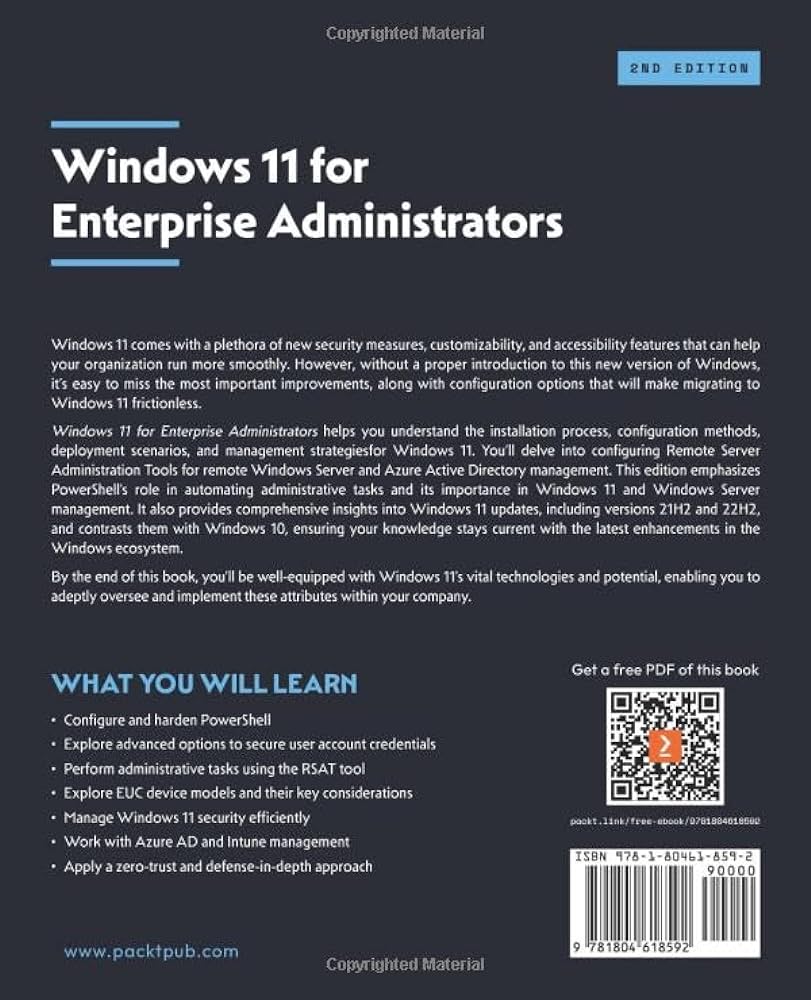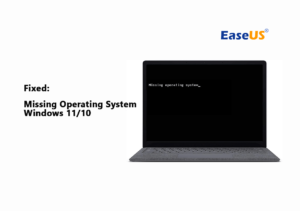Windows PowerShell is a powerful command-line shell and scripting language developed by Microsoft. It is designed for system administration and automation tasks.
Windows PowerShell offers a robust command-line interface for managing and automating the administration of Windows-based systems. With its comprehensive scripting environment and extensive library of commands, it enables users to perform a wide range of tasks efficiently and effectively. From managing system configurations to automating repetitive tasks, Windows PowerShell provides a flexible and versatile tool for IT professionals.
Its integration with the. NET Framework also allows for seamless access to system resources and services. As a result, Windows PowerShell has become a vital tool for system administrators and IT professionals seeking to streamline management and automate Windows-based environments.
Getting Started
Welcome to the exciting world of Windows PowerShell – a powerful command-line tool offering unparalleled flexibility and efficiency. In this guide, we will help you get started with Windows PowerShell, from installing the program to navigating its environment.
Installing Windows Powershell
To begin the journey with Windows PowerShell, you need to install it on your system. This process may vary depending on your operating system. For Windows 10 and later versions, Windows PowerShell comes built-in and can be accessed through the Start Menu. If you are using an older version of Windows, you can download Windows Management Framework, which includes Windows PowerShell, from the Microsoft website.
Launching Windows Powershell
Once Windows PowerShell is installed, launching it is as simple as opening the Start Menu and typing ‘PowerShell’ in the search bar. Alternatively, you can access it through the Windows System folder under the Start Menu. For quick access, you can also create a desktop shortcut for Windows PowerShell.
Navigating The Powershell Environment
After launching Windows PowerShell, you will be greeted with a command-line interface. To navigate the PowerShell environment, familiarize yourself with basic commands like ‘cd’ to change directories and ‘dir’ to list the contents of the current directory. You can also use ‘Set-Location’ or ‘Get-ChildItem’ for the same tasks.

Credit: www.amazon.com
Powerful Features
Windows PowerShell is a command-line shell and scripting language created by Microsoft to provide powerful automation capabilities and improve the efficiency of IT professionals. With numerous powerful features, Windows PowerShell has become a crucial tool for system administrators, IT professionals, and developers. Let’s dive into some of its key features that make it a game-changer in the world of IT management.
Command-line Interface
Windows PowerShell offers a powerful command-line interface (CLI) that allows users to perform computer management tasks with simple, yet powerful, commands. The CLI facilitates quick and efficient navigation, management, and automation of system processes, files, and services through a text-based interface.
Scripting Capabilities
With its robust scripting capabilities, Windows PowerShell enables users to create and execute complex scripts to automate repetitive tasks, streamline processes, and improve productivity. This feature empowers IT professionals to build custom scripts, automate administrative tasks, and handle various system management tasks efficiently.
Remote Administration
The remote administration capabilities of Windows PowerShell empower administrators to manage and maintain remote systems from a centralized location. This feature simplifies the management of distributed systems, enhances system security, and streamlines the administration of multiple servers and workstations.
Object-oriented Automation
Windows PowerShell leverages object-oriented automation, allowing users to manipulate and manage objects directly, rather than parsing plain text output. This approach enables more precise control and efficient handling of system resources, enhancing the overall automation and management capabilities of Windows PowerShell.
Integration With Other Technologies
Windows PowerShell seamlessly integrates with other Microsoft technologies, such as Active Directory, Exchange Server, and Microsoft Azure, extending its capabilities across various platforms. This tight integration ensures interoperability and enables users to leverage Windows PowerShell for a wide range of IT management tasks across different environments.
Essential Commands
When it comes to managing and automating tasks in the Windows operating system, Windows PowerShell is an invaluable tool. It is a powerful command-line shell and scripting language that provides administrators with a wide array of capabilities. To help you get started with Windows PowerShell, here are some essential commands that are worth exploring:
Getting Help
When you first start using Windows PowerShell, it’s important to know how to get help when you need it. PowerShell provides a useful set of commands to assist you in finding the information you need. Here are some key commands:
Get-Help: This command provides detailed information about specific cmdlets, functions, or modules. For example, if you need help with theGet-Processcmdlet, you can useGet-Help Get-Processto access the relevant documentation.Get-Command: This command allows you to search for available commands based on specific criteria. You can filter by name, module, or parameter, making it easier to find the command you need.
Working With Files And Directories
PowerShell offers a range of commands for managing files and directories efficiently. Here are some essential commands to help you navigate and manipulate your file system:
Get-ChildItem: This command lists all files and directories in the current location or a specified path. This is particularly helpful for exploring directories and gathering information about files within them.New-Item: This command creates a new file, directory, or symbolic link. You can specify the name, location, and type of the item you want to create.Copy-ItemandMove-Item: These commands allow you to copy or move files and directories from one location to another. You can specify the source and destination paths to perform the desired operation.
Managing Processes And Services
Windows PowerShell provides a set of commands to handle processes and services effectively. Here are some essential commands that can help you monitor and manage these vital system components:
Get-Process: This command retrieves information about running processes on your system. You can view details such as the process ID, CPU usage, and memory consumption.Stop-Process: This command allows you to terminate a running process by specifying its process ID or name. It gives you control over ending processes that may be unresponsive or consuming excessive resources.Get-Service: This command retrieves information about services running on your system. You can obtain details such as the service name, status, and startup type.Start-ServiceandStop-Service: These commands enable you to start or stop services on your system. You can use the service name or display name to perform the desired action.
Network Administration
Windows PowerShell is an excellent tool for network administration tasks. It offers various commands to help you manage network devices, configurations, and connections. Here are some essential commands in this domain:
Test-NetConnection: This command allows you to test the availability and connectivity of a remote network host. You can check whether a specific port is open and determine if a connection can be established.Get-NetAdapter: This command retrieves information about network adapters on your system. It provides details about each adapter, such as interface index, name, and status information.Set-NetIPAddress: This command enables you to configure IP addresses on network adapters. You can specify the adapter name, interface index, and the desired IP address and subnet mask.
Active Directory Management
For system administrators managing Active Directory environments, PowerShell offers a comprehensive set of commands. These commands help streamline administrative tasks related to users, groups, and domains. Here are some essential commands for Active Directory management:
Get-ADUser: This command retrieves information about Active Directory users. You can filter results based on specific criteria, such as a username, group membership, or organizational unit.New-ADUser: This command allows you to create new Active Directory user accounts. You can specify attributes such as username, password, email address, and group membership.Get-ADGroup: This command retrieves information about Active Directory groups. You can view details such as the group name, members, and group scope.

Credit: m.facebook.com
Advanced Techniques
Windows PowerShell is a powerful advanced technique used in managing and automating tasks in the Windows operating system. It offers a command-line shell and scripting language, allowing users to efficiently perform administrative tasks and automate repetitive processes.
Using Powershell Modules
One of the advanced techniques in Windows PowerShell is utilizing PowerShell modules. Modules are prewritten scripts that contain functions, cmdlets, and other tools to extend the functionality of PowerShell.
Using PowerShell modules allows you to easily access additional features and commands without having to write long scripts from scratch. These modules are designed to handle specific tasks or provide a set of functionalities for a particular purpose.
Some commonly used modules include Active Directory module, Hyper-V module, and Exchange Server module. These modules can help you automate administrative tasks, manage virtual machines, and perform various server-related operations.
Working With Variables And Arrays
Windows PowerShell provides powerful functionalities for working with variables and arrays. Variables are containers used to store data, while arrays are objects that hold a collection of values.
By using variables, you can store and manipulate data within your PowerShell scripts. This allows for the reuse of values and makes your scripts more modular and flexible. Variables can be assigned values, modified, and accessed throughout the script.
Arrays, on the other hand, enable you to store multiple values in a single variable. This is particularly useful when dealing with lists, collections, or sets of data. PowerShell makes it easy to create, access, and manipulate arrays, allowing you to perform operations on multiple values simultaneously.
Creating Custom Functions
Another advanced technique in Windows PowerShell is creating custom functions. Functions are reusable blocks of code that perform a specific task, and they can greatly enhance the efficiency and readability of your scripts.
By creating custom functions, you can encapsulate complex operations into a single command, making your scripts more concise and modular. Custom functions not only save time but also make your scripts easier to understand and maintain.
You can define parameters for your functions, allowing you to pass arguments and use them within the function’s code block. This provides flexibility and enables you to customize the behavior of your functions based on different input values.
Utilizing Pipelines And Filters
Windows PowerShell includes a powerful feature known as pipelines, which allows you to chain together multiple commands and pass the output of one command as input to another. This enables you to perform complex operations by combining simple, individual commands.
By utilizing pipelines, you can streamline your workflow, eliminate the need for temporary variables, and perform advanced filtering and transformation of data. The output from one command becomes the input for the next, creating a seamless flow of data through your scripts.
Filters, on the other hand, allow you to selectively process and manipulate data based on specified criteria. You can use filters to sort, filter, and format the output of your commands, making it easier to extract the information you need.
Writing Advanced Scripts
Writing advanced scripts is one of the key capabilities of Windows PowerShell. With its extensive scripting language and rich set of cmdlets, you can create complex scripts that automate a wide range of tasks.
When writing advanced scripts, it’s important to ensure that your code is well-structured, efficient, and maintainable. You can use loops, conditional statements, error handling mechanisms, and other programming constructs to control the flow of your scripts and handle various scenarios.
It’s essential to follow best practices when writing advanced scripts, such as using meaningful variable names, adding comments for clarity, and breaking down complex tasks into smaller, manageable functions. This will make your scripts more readable, reusable, and easier to troubleshoot in case of any issues.

Credit: www.amazon.com
Frequently Asked Questions For What Is Windows Powershell
What Is Windows Powershell And What Does It Do?
Windows PowerShell is a command-line shell and scripting language developed by Microsoft. It allows users to automate tasks and manage system configurations. PowerShell combines the functionality of both a command-line interface and a scripting language, making it a powerful tool for system administration.
How Is Windows Powershell Different From Command Prompt?
While both Windows PowerShell and Command Prompt are command-line interfaces, there are some key differences. PowerShell uses a scripting language and supports more complex operations, such as remote management and automation. Command Prompt, on the other hand, is more simplistic and mainly used for executing commands and running batch files.
What Are The Benefits Of Using Windows Powershell?
Using Windows PowerShell offers several benefits. It provides enhanced productivity through automation, as tasks can be scripted and executed more efficiently. PowerShell also allows for remote management, making it easier to administer multiple systems. Moreover, PowerShell has a vast array of pre-built commands and modules, enabling users to perform a wide range of tasks without writing complex code.
Conclusion
To wrap up, Windows PowerShell proves to be a powerful, versatile, and efficient scripting language and automation framework in today’s digital landscape. Its command-line interface and extensive library of commands provide users with a seamless experience in managing and automating various tasks on Windows systems.
By embracing PowerShell, users can streamline their workflows, increase productivity, and enhance system administration capabilities. Its potential for customization and scalability makes it an indispensable tool for IT professionals, developers, and enthusiasts alike. Harness the power of Windows PowerShell and unlock a world of possibilities.


